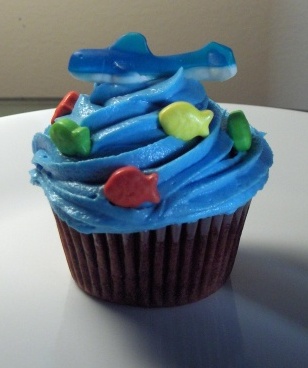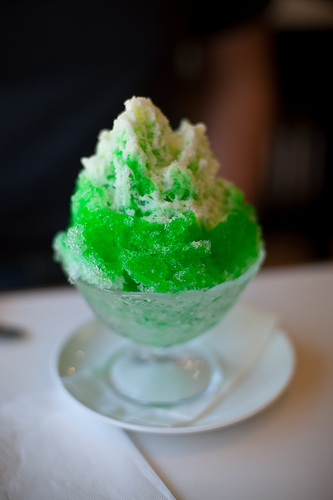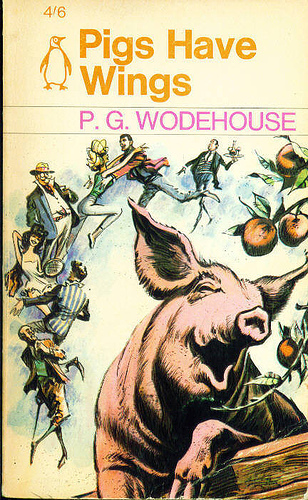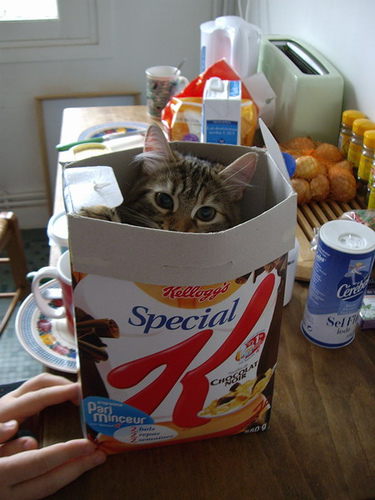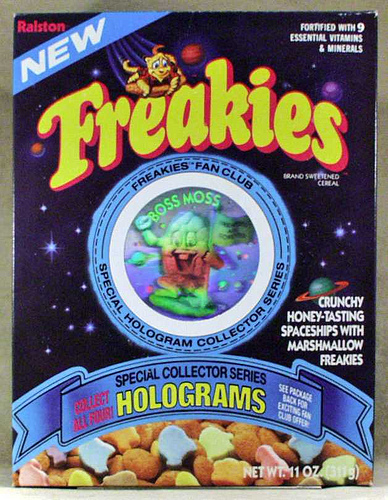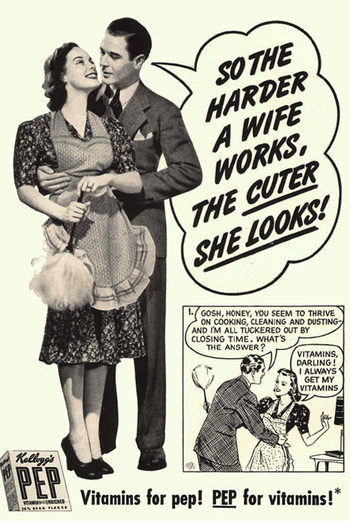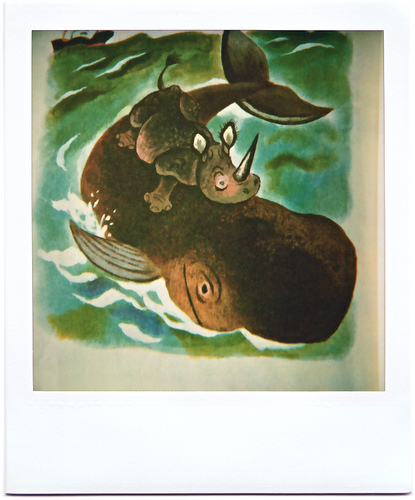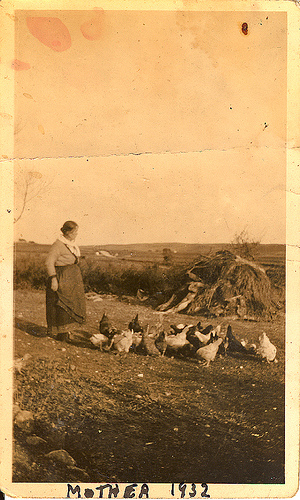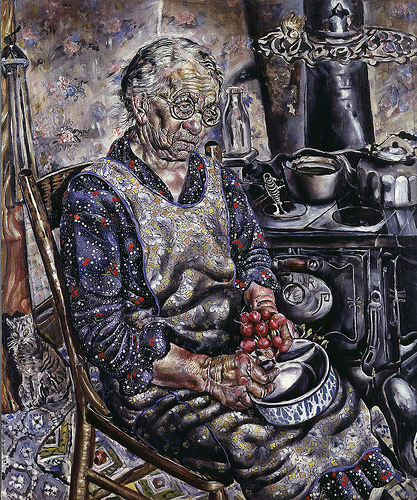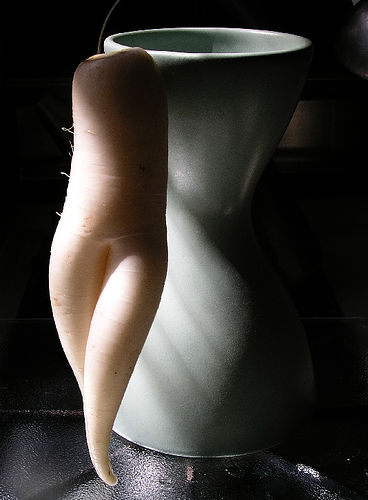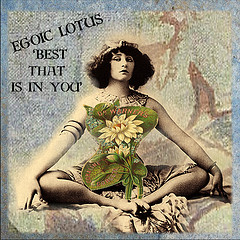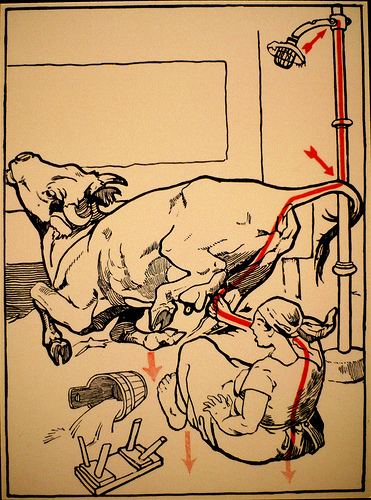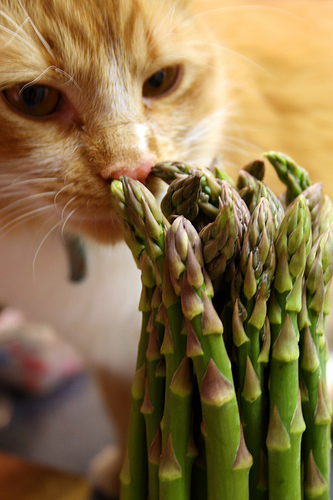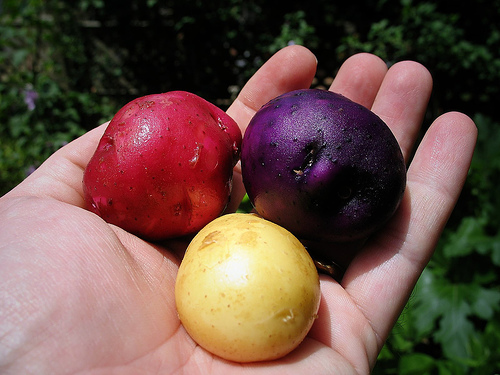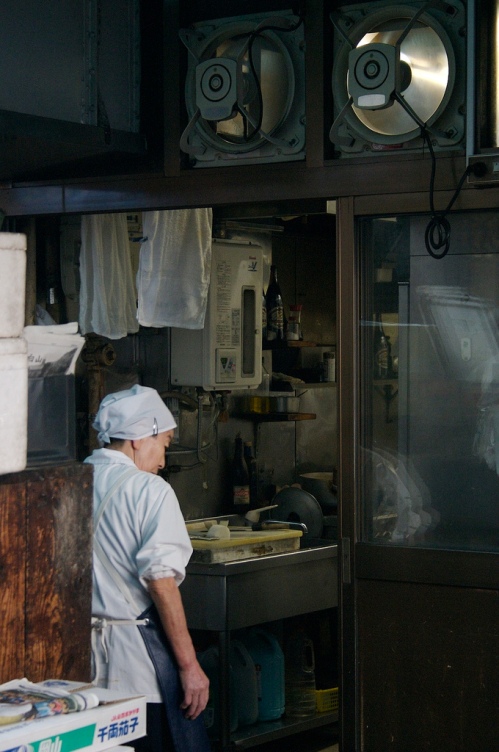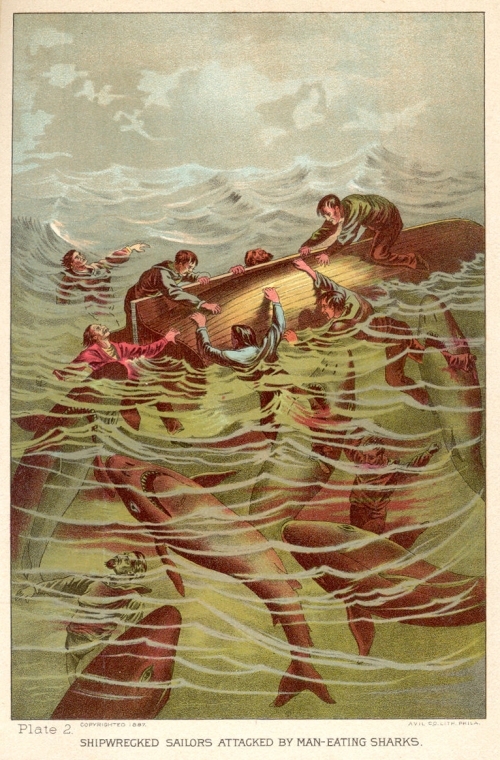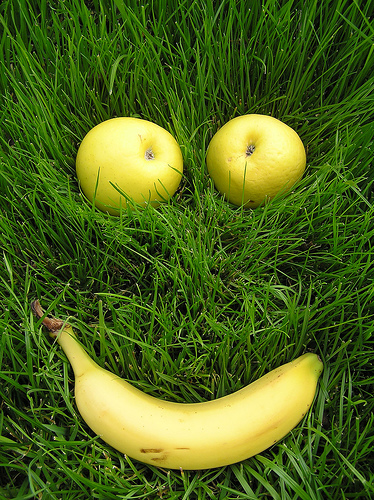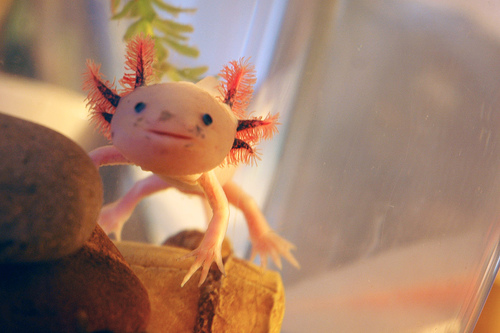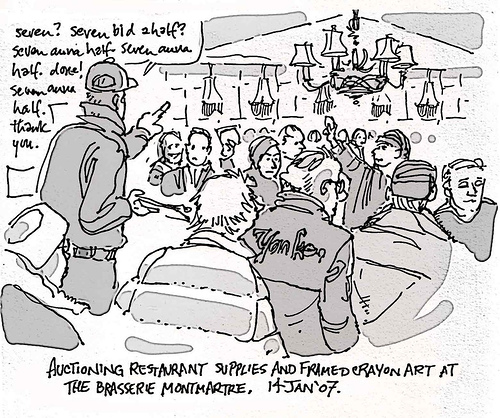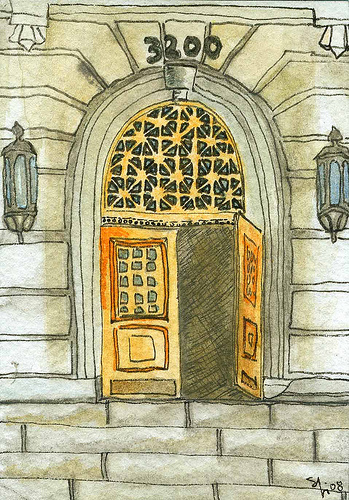Posted in Eating, Uncategorized | Tagged Cats, Caturday, Food | 7 Comments »
The five minute faux foodie must remember but a few things in society: deportment; etiquette; and a few useful phrases. We will briefly offer suggestions that may help if you are one of the many who aspire to this mantle.
Deportment: At the start of each day you must train yourself to put food first in mind. All other thought must be pushed to the side for later thought. What you will wear is not important nor are any business meetings. The weather is important only in that your menu will be planned upon it in certain ways. Sex is not important. It can wait till you’ve had a foaming cup of cappuccino and some chocolate. This should take you one minute each day to push other thoughts aside. Train well. As with all things, the training will prove well worth it!
Etiquette: Foodies come in various groups. You will find those who fill their time with foams and exquisite artistry at great expense. Others like to cook for themselves. Some groups focus solely on fast food or on pizza in foodie ways. Do not shudder in pain or disdain when you meet a foodie from a group other than yours. Remember, you are all foodies no matter how it is expressed! It may take one solid minute to learn to hide the sense of alienation you have upon meeting a foodie from a different group. One minute per day. It must be done.
Useful phrases: These change each year and must be learned. ‘Sustainable’ is your primary concern this year. Other words important to bandy about: ‘local’; ‘organic’; ‘grass-fed’; ‘sel de fleur’; ‘sourcing’; ‘porky bits’; and of course ‘exquisite’ is always useful. Learn your terms. One minute per day. Non non non! It is of course ‘fleur de sel’. Forgive me, my mind wandered – something about chocolate was at the edges, eating up all other thought!
Organic? Or not: The philosophy of being a foodie is one to come to terms with or you will be unable to carry yourself with the proper rigor. Each foodie must decide for themselves whether ‘foodie’ is a natural thing to be – something quite fine and natural that organically grew from the soil of the fertile cooks and diners before us or whether the ‘foodie’ is something created as a improved human being by, of course, the improved human beings who created it as a concept and way of being. This will take one more minute each day of study and thought.
If You Must Cook: If you must cook as a five minute faux foodie, remember to keep it simple. If you can buy the best and just put an expensive knife to it then lay it out nicely on a plate, that is the best idea. The financially-challenged foodie will have to find other means that take no time. Go to grains. Lentils, green French lentils, are always a good idea. Make sure you leave the container within sight for your guests when they walk by the kitchen. One minute for menu planning, if you must cook.
Dear readers, I do hope that those who aspire to the five minute faux foodie life will take heart from these modest injunctions and will jump in the pond with all the other foodies! You are worth it, even if you only have five minutes a day and are faux! Do not give up this chance, for after all – what else is there to do?
Posted in Food Culture, Foodie | Tagged Foodie, Katerina la Vermintz | 6 Comments »
It has been brought to my attention that in certain circles the social attainment called being a ‘foodie’ is being discussed. This comes as no surprise to me for it is a most fascinating conundrum. I myself had left off discussing the term after one well-placed blogger wrote that the term did not need to be talked about anymore. It was not that I believed her, but rather that her decisive injunction had been picked up by the Press and reported as if it was important. Oh! I do admire the machinations of those who hire PR people!
But I am encouraged that I may speak just slightly of the Foodie. After all, in recent memory I have read a most brilliant discussion of whether a foodie can rightly be called a ‘fan’ of food on the ASFS boards by the luminaries there, and just today the estimable Rachel Laudan mentioned foodies in a post on her blog.
My area of expertise is etiquette, of course. If you have had a pea dropped down your frontspiece by men such as Le Rochefoucauld and his merry set etiquette is a requirement. I only most devotedly wish to assist the weary reader in these areas. Therefore I propose now a small and I hope delightful series of notes on how to become a five minute faux foodie. Most of you do not need more. Nor do you have the time for more what with Twittering and cellphones and trying to define and sell your brand whilst inbetween quoting the finer self-help quacks in the business today.
The hour is late. The cat waits for her food and dusk is falling. I shall have to continue tomorrow in these instructions. But do, please, have hope. We all can be five minute faux foodies and may enjoy the admiration of the masses. Instructions will follow.
Oh! Do forgive my terrible lack of comment for I do wish to say Happy Bastille Day to All!
A tout l’heure!
My devotions,
Katerina la Vermintz
Posted in Food Culture | Tagged Foodie, Katerina la Vermintz | 3 Comments »
Well rounded bagel with
Cream cheese and sable
Green capers and onions (red)
No fish tale nor withered nasturtium bud
Considers this swallow their bed.
Hanatsubomi, hanayu? Yuzu you are, till eaten.
As farro! O farro!
Creeps into lasagna
(Ancient as Zeus’ old bolt)
Kakigori clouds delicately
Fall freezing
And the soft bun’d hot dogs onion-ly emote.
There was a river!
It was the Hudson
But I saw my friend’s face before it
Biting bright Bowery pickles
Always quite crunchy and
The fat strudel of poppyseed can hardly be
Grumpy.
Let not my food love be called idolatry!
Since all edible, these bites and baubles be.
Three themes in one
My love is
I bid you
Each
A bite,
A swallow,
A ruminative
Chew.
………………………………………………………………….
There you are, Sonia, per your request – my love letter to the happy New York foods! 🙂
Posted in Eating, Food | Tagged Food, Food Poetry | 11 Comments »
You don’t need to be a rock star, neighborhood butcher. Really. We loved you just as you were before you were a celebrity.
Meow meow meow meow.
Posted in American Food, Foodie | Tagged Rock Star Butchers | 14 Comments »
A sable special at Murray’s bagels
A box of wagashi, including one like the one above

Farro lasagna
Kakigori which froze my tongue so much that when I talked near the end of it I sounded drunk
Hot dogs with lots of ‘Greek-style’ onions and papaya drinks
Waterfront dining above at SouthWest
Katz’s and the ever-so-gently pickled pickles are so good
Hungarian Pastry Shop
And last but not least, a link to the menu at Henry’s End.
How many days was I in NYC?
(Not enough!) 🙂
Posted in American Food, Eating, Food | Tagged Eating, Food, New York City Dining | 4 Comments »
I am back from New York. The City. I left there about seventeen years ago, and have only returned three times since – once for a wedding, once for a funeral, and once after a divorce. New York was my home from the time I was fourteen years old till the time I left, basically – except for a few travels here and there – but I always returned.
I left New York to be married. To have children. To grow a family. And I have done so – though not exactly in the way I supposed I would, with a husband by my side, but rather without a husband by my side. That’s another story, for another time perhaps.
I returned to New York this time with my daughter. My daughter headed herself towards the city without any urging from me. It is where her heart has led her at the age of sixteen, to study art at one of the best schools that exists for studying art – and in one of the most challenging programs.
There is pathos in this picture, for the similarities between the way my daughter entered the city to begin her life there (if only for this month of summer school) and the way I entered the city to begin my life there are just about as different as day and night. But this is not about that, this is about the food.
It’s hard to get a grasp on the picture of a person through food, really. It can be drawn, a picture, of anyone – with food. The hidden meanings of the food can be brought forth, the adjectives and verbs tossed into the picture as if with a charcoal pencil, to ink out a personality. Quite useful, very entertaining. Often false. The delicate vegetarian can hold a heart full of driven hate and the meat-gnawing potato chip chomping pagan just might turn out to be a gentle soul cautious of ever saying the least offensive thing to anyone at all who may cross his path.
So I’m not going to try to do that – to draw a picture with food. Nor am I going to draw a picture of food. Instead I’ll just tell of a walk down a street in Brooklyn Heights that has something to do with food.
My daughter and I walked down the street in Brooklyn Heights. I showed her the apartment I lived in, before there was a person called my daughter, who now walked beside me. I pointed to the building where I’d knocked on my father’s door (the address of which I’d found to my great surprise in the phone book)(and to my even greater surprise found that he lived in the same neighborhood I had landed in) for the very first time ever to introduce myself to him without warning, at the age of fourteen. There were several restaurants whose doors had remained open all these years in the neighborhood that I’d lived in (a rare thing in the city) but we passed them by.
We walked way down to the end of Henry Street, and entered a narrow-fronted brick building. After all these years, during the time I’d grown a daughter, this restaurant had remained open. This was the first restaurant I’d ever eaten in, when I was around my daughter’s age – that made food something which held a sense of artistry within it, and a depth that went beyond my perception of what food was – or what it could be.
We sat at a table, and I looked up and saw the same guy cooking as had been cooking at the line all those years ago. It did not seem real, but it was. The menu had changed somewhat, but still had the fine touches but not glaring spotlights that spell a deft touch without a vaudevillian edge.
The food was good. It always was.
But I must say that any food pales in my mind and heart in comparison with that simple walk down the street to get there, with my daughter. One fourteen year old runaway had come back to the city she’d entered with a duffle bag full of clothes and forty dollars. That’s me. And she’d brought her daughter to go to art school, and to eat at the restaurant that had first inspired her to think of food in such a way that led to becoming a professional chef – Henry’s End.
Is this about food? I’m not sure. But if you ask me about food and my trip to New York, this is what comes to my mind.
Posted in Food | Tagged Brooklyn Heights, Dining Culture, Family, Henry's End | 14 Comments »
It was because of the coffee that I knew we were close to New York. And it wasn’t about the type of coffee or the taste – because we’d stopped in yet another Panera off the highway exit ramp offering the same kind of coffee as the last Panera off the exit ramp.
It was how I got my coffee that told me I was near New York. New York City. I’m not talking about the state because there is no discernible difference when you cross state lines. It’s all about the City.
I gave my order to the Panera girl. Double espresso. I waited, expecting as usual to have to repeat the order at least once then to have to wait patiently as she picked out the right button on the cash register then to pay then to wait another three minutes or so while she moved to the espresso machine to carefully slowly tease out the coffee from the machine.
But it wasn’t like that. I ordered and she didn’t ask me to repeat myself. Instead she rang up the order and moved with lightning speed to the espresso machine. She was a little thing and as she moved she called out, “I’ve never made this before,” (try this scenario on anywhere else but New York City and you’ve got at least a ten minute wait for your coffee twiddling your thumbs and biting your tongue while the learning process is somehow carefully and painfully managed) and the manager, a little stocky Italian guy with arms like a hairy gorilla, appeared magically at her side. “It’s easy,” he said. “Just do this that and that,” he told her while pointing at things on the machine. She nodded, did what he said, and he turned to me. “You want it here or to go?,” he asked rapid-fire (it sounded like “youwanhereorgo” and my heart sang. I loved this guy. He spoke my language. “I’m going to take it to go,” (I’mgointotakego) all rapid fire patter between us, and I wanted to hug him from the sheer joy of the dance that got that coffee for me in just about half a minute rather than the three or four deadly, dull, boring minutes it takes ‘outside the city’.
It was because of the coffee I knew I was near New York. It felt great to get coffee in my language. Exultant, even.
Posted in Food Culture | Tagged Coffee, New York City, Restaurant Culture | 4 Comments »

Lots of people have food fears lately. With good reason, too. Once in a while there are outbreaks of nasty things that do immediate damage within our food systems. Our fast foods and convenience foods are loaded with tricky ingredients that apparently make people unable to stop eating them while slowly their weight ballons and their health may be affected. Even organic foods are tricky – they might come from a factory farm and still be ‘organic’ but what the USDA calls organic and what other people call organic may be different. Local foods are fine as long as the grass-fed cows are not pastured with the free-range chickens (although it makes a pretty picture for sure). And if you don’t know why, then there is yet another thing to find out about and be scared of!
How to decide what food to trust. There are many opinions. So many ways to sort this out that even that can be frightening.
I’ve decided to take things into my own hands. For a long time I’ve known something about fear and trust. And what I know can be boiled down to a few words, which it could be you’ve heard before:
“I’ll trust him as far as I can throw him.”
Absolutely. There is meaning in that phrase. When someone says that to me, there is no question in my mind as to ‘what it means’. It is clear and decisive. And there is methodry involved, scientific methodry. Throwing.
I decided to test some new foods from the supermarket today, compared to some I already buy, to see how far I could trust them. Who knows. It might be the packaging full of chemicals. It might be chemicals in the growing process. It might be the way the corporation is run. It might be the caloric content. It might be the way the food has been treated. It might be gluten in excess or sugar there’s always sugar or worse some sugary thing made from corn. I need to find out what I can trust.
I walked to the playground nearby to conduct this test, so that the foods would all be calm and content, pleased to be in a joyful childlike environment. And I started throwing.
Each throw was the same. I used the same amount of strength and stood in the same exact place. And here are the results:
The little frozen challah breads came in as the clear winner in trustworthiness since they could be thrown the furthest. Next it seemed as if the asparagus and the honey bear honey were a tie, though the asparagus was right in the center unafraid of the test and the honey bear honey sidled off to the left a bit.
Lamb chops, banana leaves, and granola were somewhere in the middle. Trustworthy but apparently worth watching a bit, just in case they try something.
Last was the tofu. It did not go very far. Distressing, for tofu always presents itself as one of the foremost trustable foods. But then again, it often is like this. Underneath the bluster of loud ideology can be found some pretty big cracks if one chooses to look.
I hope this scientific method to determine if your food fears are justified helps you as much as it has helped me. Please send in your own results from any testing you may undertake.
It’s just one way of making the world a better place.
Posted in Food Culture, Food Politics | Tagged Food, Food Fear | 9 Comments »

Is there ever a time when a cloth should not be spread out on the grass, after carefully kicking away the small stones and bits of leaves and tiny branches, hoping that for once, for only once – the laying-about will be as comfortable as seemingly promised, the food will not spill sideways or be attacked by bold wild flying insects, the wine will not spill on the shirt-front?
I don’t think so. It should always be time for a picnic, and I’ve been invited to one!
Louise at Months of Edible Celebrations is having a picnic, and the table has started to be laid. Are you curious to see what everyone is bringing? I am! And luckily I’ve got a list. Here’s what we’ll be eating:
Apple Pie with Dutch Crumb Topping from Miranda
Buttermilk Spice Cake from Mary
Chocolate Cherry Pie from Janet
Dilly Potato Salad from Gloria
Election Day Cake from Erica
Fruit Cocktail Meringue Pie from Erica
Gluten-Free Upside-Down Cake from Dia
Hangar Steak with Chimichurri Sauce from Stacey
Ice Cream in a Bag from Marjie
My gosh, what a lot of food! Incredible! Louise asked me to bring something I often seem to talk about.
It was kind of her to ask me to bring this, for it really is only an idea. No recipe. Just a silly poem and a picture. But my goodness, what a lot of recipes from this picnic! It’s best if I just bring some hot air, don’t you think?
The food looks great, everyone. See you at the picnic!
Posted in Cooking, Recipes | Tagged Food, Online Picnic, Picnic Recipes | 4 Comments »
The sturdy letter ‘A’ starts the alphabet and so we must begin with sturdy things. For a piggy alphabet ‘angel’ will not do. Instead we must go straight to ‘animelles’. Animelles are a part of the piggy but not a part of the sow. But more on this later, perhaps. It has been a difficult task to write a piggy alphabet after the virtuouso performance by Suzy Oakes of whatamieating.com shown in the sixth comment on the previous post. But here goes:
A – animelles
B – brawn (follows along nicely after animelles)
C – caul fat which I love or crackling bread which I may love even more
D – devilled, which is a method of cooking pig’s feet
E – et tu, brute which is what you should say when you meet a pig
F – fidget pies
G – gelee
H – humorous, because pigs are
I – intestines
J – James. Jane Grigson writes that ‘This bland combination of pork, prunes, cream and the white wine of Vouvray embodies what Henry James described as ‘the good humoured and succulent Touraine’.”
K – kidneys
L – lights and lungs
M – mesentary
N – nose ring
O – O! O oO! O! is the common sound made by someone the first time they taste a whole roast pig.
P – Pen
Q – Quiet, which a pig is not
R – Rooting
S – St. Anthony, the patron saint of sausage-makers
T – Tourtiere
U – Urban Foragers which is what pigs were, in the streets of New York City back in ‘olden times’
V – Vauban, who at one time calculated that in twelve years ‘a sow could accumulate 6,434,838 descendants‘
W – Wienerbeuscherl
X -Xanthippe, who married Socrates who wrote “It is better to be a human being dissatisfied than a pig satisfied; better to be Socrates dissatisfied than a fool satisfied”
Y – yippeee! is the appropriate response when good barbecued ribs appear
Z – zabaglione is an excellent dessert to eat after roast pork.
Yes, the pig took wing. It was a stretch, but the alphabet is done.
Charles Monselet has a poem for us!
For all is good in thee;
Thy flesh, thy lard, thy muscles and thy tripe!
As galantine thou’rt loved, as blood pudding adored.
A saint has, of they feet, created the best type
Of trotters. And, from the Périgord,
The soil has blessed thee with so sweet a scent
It could have woo’d Xanthippe, all her anger spent
To join with Socrates, whom elsewise she abhorred
In worship of this lord
Of animals, dear hog: angelic meat, say we.
Posted in Food Culture, Food History | Tagged Alphabet, Food, Pigs, Poetry, Pork | 5 Comments »
What is a pig, as far as food goes? The alphabet pertaining to pig in Bruno’s Cantus Circaeus is more esoteric than practical, for most purposes. And rather unkind, too! My own philosophy of pigs is much like Grimod de la Reyniere’s.
Everything in a pig is good. What ingratitude has permitted his name to become a term of opprobruim?
Therefore, it is imperative to have an alphabet to remember him by. I’m not aware of any pig alphabets, so we’ll have to make one up! At least we’ve got a start, from the chart posted above.
B – Butt (and Bacon!)
C – Chop
F – Feet (also known as Trotters)
H – Ham (also Ham Steak)
J – Jowl
R – Roast
S – Sausage (also Spareribs)
Lots of letters to go. Can it be done?
Some inspiration, from a man named (of course) Charles Lamb:
He must be roasted . . . . There is no flavor comparable, I will contend to that of the crisp, tawny, well-watched, not over-roasted, crackling, as it is well called – the very teeth are invited to their share of the pleasure at this banquet in overcoming the coy, brittle resistance – with the adhesive oleginous – O call it not fat! but an indefinable sweetness growing up to it – the tender blossoming of fat – fat cropped in the bud – taken in the shoot – in the first innocence – the cream and quintessence of the child-pig’s yet pure food – the lean, no lean, but a kind of animal manna – or, rather, fat and lean (if it must be so) so blended and running into each other, that both together make but one ambrosian result or common substance.
Posted in Culinary | Tagged Alphabet, Eating, Food, Pig, Pork | 14 Comments »
‘In a pig’s eye’ is an American colloquialism meaning ‘not a chance in hell’. I’ve never heard anyone actually use it, but it does pop into my mind once in a while.
Rote memorization of facts someone else thinks go together because they were told at one time to memorize them sometimes strikes me as worthy of the phrase. “Here’s what you need to memorize,” they may say to me, and I may say back to them, “Why?,” and they may say “Because it’s always been that way,” and I may think to myself in response “I’ll do it your way in a pig’s eye!”
But a long time ago when magic and memory were topics happily married in the same sentence, there was a book which helped people do magic or memorize things they wanted to memorize, or some combination of the two.
The book was written by a man named Giordano Bruno. His ideas didn’t fit the general thinking of the thinkers of the times, so naturally they killed him off and he is now defined as a ‘martyr of science’. The name of the book with the cute picture of the hairy pig posted above is ‘Cantus Circaeus’.
Cantus Circaeus (“Incantation of Circe”) is an early work by Bruno on the art of memory with strong magical elements. It is written in the form of a dialogue between the great sorceress Circe and her assistant or apprentice Moeris. It opens with Circe’s incantations to the planets which appear to be based on Agrippa, De Occult. Phil. II, lix. These incantations are described as “barbara & arcana”. These are accompanied by various magical operations including the use of an altar, fumigations, and notae. This is followed by an Art of Memory.
According to I.P. Couliano, “Giordano Bruno’s magic is based not only upon the Ficinian tradition but also on techniques relating to the art of memory. This art consisted of a manipulation of phantasms or inner images, whose purpose varied from the mere learning by heart of a text to mystical contemplation.” (‘Magic in Medieval and Renaissance Europe’ in Hidden Truths: Magic, Alchemy, and the Occult: 1987).
About right now I bet you’re thinking “What does this have to do with food?”, and “When can I get something to eat around here?”. Patience. And besides, if you are sitting here on the computer it’s likely you eat three hearty meals a day plus all the snacks you want, anyway. What’s the rush?
Today we don’t worry about Circe and magic too much. But we do think about pork a lot. So I’ve decided that knowing your pork and knowing it well (and being able to memorize what you know!) just may be important.
Above you see pig. Nice hairy pig. There is an alphabet surrounding the pig. For each letter there should be some piggy-thing which connects to eating the pig. Or cooking the pig. Or growing the pig.
Do you know what they are?
Posted in Food | Tagged Cantus Circaeus, Cooking, Eating, Food, Learning, Memory, Pork | 4 Comments »

Photo Micaela Rossoto
Haute jello is never out of place.
Haute jello does wonders for the face.
Haute jello is the friend to the figure
Haute jello makes a lovely picture.
Posted in Food Culture | Tagged Food and Fashion, Jello | 8 Comments »
The New York Times International Cookbook ‘by’ Craig Claiborne is among my small gathering of long-time book companions. I put the quote marks there because I’m not sure I see Craig anywhere in the book, aside from a preface where he lists a zillion names and gives thanks to a large city.
This is a book of recipes. Period. No commentary, no cultural notes, no cute little stories, no stressing over ingredients or substitutions, no ‘how to cook’ notes, no pages of equipment with details.
The collection of recipes is good and basic. So much so that the book feels substantive. But in terms of cooking from it – no, I never really did. It feels substantive, the book, but it is more on my shelves just because it feels substantive. Not because it is substantively useful to me.
There are several recipes in this book that were worthwhile to me, though. Very basic recipes but simple and delicious. Pastisio is the first – and the best of the lot. And if you don’t have pastisio every once in a while there will be a part of your soul lost. You will forget the glaring sun upon the open-aired sea, lose the taste of Retsina burning at the back of your throat, and rue the memory of cats sidling round your feet at the taverna.
Therefore it is important to keep the pastisio fires burning. One recipe. That’s why I keep this book.
You have to eat oatmeal or you’ll dry up. Anybody knows that. (Kay Thompson)
Kay was really talking about pastisio when she wrote that.
Posted in Food Literature, Global Food Culture | Tagged Cookbooks, Craig Claiborne, Food, Pastisio | 4 Comments »
Come live with me and be my love,
And we will all the pleasures prove
That valleys, groves, hills, and fields,
Woods, or steepy mountain yields.
The book remaining longest on my shelves, therefore deserving of Christopher Marlowe’s pastoral, is Waverly Root’s ‘Food’. Why should this be so? The poor old thing is broken-backed, it looks as if someone hit the edge of the bottom pages with red spray-paint lightly at some time, and the cover is the most repulsive olive-green to ever exist in the world.
In this case you can’t tell a book by its cover. Well, maybe you can. Depends on who you talk to.
Many people think Waverly Root was not quite de rigeur. Or rather, he may have been de rigeur but he was not right about a lot of things he wrote. This could be so. But above all, Waverly was entertaining, even in his sickening pea-green overcoat.
Let me show you Waverly. I’m going to flip open the book and see where it lands.
Broccoli. And E.B. White on broccoli. Chives. And He who bears chives on his breath Is safe from being kissed to death and then on to Martial on chives. FO, stands for fogas, a Hungarian fish. Yes, I know the fellow! LY stands for the lycopodium, whose root is no longer eaten as an aphrodisiac.
Parsley warrants a couple of pages, with a final mention of Platus then on to Chaucer in critical mode about a cook named Hogge of Ware who had some problems with parsley and a goose whose freshness might have been questionable
Of many a pilgrim hastow Cristes curs,
For of they persly yet they fare the wors,
That they han eaten with thy stubbelgoos;
For in thy shoppe is many a fly loos.
In the entry on rye we learn of witchcraft and ergotism. SO stands for soump oil, a fat universallly used in the Ivory Coast, Chad, and East Africa, made from the intensely bitter fruit of the zachun-oil tree, which fails to explain why it is also called heglik oil
And Venus, of course, stands for a family of clams, notably the quahog, eaten with gusto in New England and when we get close to the end of the book, Waverly tells us that yellowtail (which in some places is called snapper or flounder) is called a I-don’t-know-what in Japan.
I don’t know what, either. But I do enjoy trying to figure it all out with Waverly.
And we will sit upon the rocks,
Seeing the shepherds feed their flocks
By shallow rivers, to whose falls
Melodious birds sing madrigals.
Posted in Culinary, Food, Food Literature | Tagged Books, Food History, Waverly Root | 3 Comments »
Have you ever really wanted a book of some sort so much that you started to fantasize about owning it? I don’t mean like owning it part-time, taking it out of the library then returning it. I mean like a book you just have to own.
I have, and it’s strange, because I don’t really want to own a lot of books. Most books I read and give away, if I own them. Yes, even cookbooks. Because the ones that are pretty, really pretty – are mostly just that – only really pretty. Ultimately they are boring. And the ones that talk of one thing or another – or perhaps they have stories in them – unless there is something startlingly exceptional I really don’t want to have to have those books staring at me accusingly from my shelves as I once again run my fingers right past their spines when looking for inspiration or entertainment.
But this one book, I really want right now. It’s not available in the US as far as I know. And since it takes every bit of all my energy and resources to sit right here at home taking care of the usual things of children and life, I’m not about to hop on a plane to Paris to get this book.
But I have had a fantasy about getting the book delivered. And I assure you, this fantasy surpasses by far any fantasy a girl is supposed to have about her wedding. My fantasies about weddings mostly go as far as seeing the cake and wondering what it tastes like. Rather compressed, this wedding fantasy. Oh well.
But my book. Now that’s a different matter. This is how it would happen: I’d be sitting in my kitchen writing on my computer. I can see out the window next to me as I do this. The mailman would appear around the corner, spindle-shanked in his shorts and socks and sandals. My mailman I am sure listens to NPR in his spare time. He is of medium height, has curly dark brown hair and round wire-rimmed glasses and he looks as if he frequents the health-food store, worrying about things that people worry about who frequent the health-food store. But no, this is wrong. I can not have my book delivered by my mailman, for several reasons. One is that his shanks are too skinny. It worries me, his shanks. If they were lamb shanks sitting wrapped in a styrofoam tray wrapped in clear plastic at the grocery store I would not want to buy them.
Do you remember the song from the Sixties that had a phrase in the middle of it ‘Who wants to dance with the lady with the skinny laiiiigs?’ the guy mockingly sang out right in the middle of it, and boy, I’ll tell you at the age of five or six or seven that song made me feel quite discouraged. Apparently nobody wanted to dance with ladies with skinny legs, at all! And my legs were very skinny. I felt terrible.
But anyway. At least that now I have acheived a more Botticelli-like form I don’t have to worry about that anymore! At least now I can look at the Venus-Clamshell lady and closely analyze as much as one can do without a microscope exactly how rounded her tummy is and whether it is more or less rounded than mine, and how all this will affect my outlook on life.
So forget the mailman. My book will be delivered by the UPS guy. The big brown truck will pull up, and park. The UPS guy will hop out of the truck door and walk towards my door. Now I always get a little nervous when the UPS guy delivers anything because of one particular thing. Fact is, the guy is just about my height. And since I’m pretty short, this doesn’t happen too often. But when it does it can be a little weird, because guys whose eyes are pretty much on a level with mine have an unusual aura. At least they have an unusual aura with me, when their eyes meet mine, and this is what makes me nervous when I have to sign the UPS thingie. There is a strange energy emitting from the guy who is pretty much my height. He is looking at me, and as I have the ability to see parallel worlds that exist alongside this regular one every once in a while I know the parallel world that is existing here, coming from the short guys eyes out towards me.
In his parallel world, both he and I are in the same place at my door but in a flash he is no longer a UPS guy. In a startling instant his UPS uniform sort of rips off all by itself and he is dressed in a Tarzan outfit. He is King of the Jungle.
Trust me, I cut that parallel universe thing off right at that point. I don’t want to know any more about it.
But here he is, anyway, with my book. He greets me, does the parallel universe thing, I sign the UPS magical signing thing, and I have a cardboard box in my hand with ‘Amazon’ printed on it. Joy! Oh joy! My book is here!
The rest, dear reader, you must imagine. How I rip open the cardboard, lovingly caress the cover, gently turn then wildly flip through the pages, staggeringly thrilled at the entire thing!
I went through my shelves the other day, to see what books I’d kept through many travels, too many damp cellars, and much giving-away of books. Here’s the list:
Waverly Root – Food
Time-Life Series Cookbooks – Vienna’s Empire
Ellen Brown – Cooking with the New American Chefs
Lenotre’s Desserts and Pastries
Craig Claiborne – The New York Times International Cookbook
Judith Olney’s Entertainments
Witty and Colchie – Better Than Store Bought
Alan Davidson – North Atlantic Seafood
Evan Jones – American Food, The Gastronomic Story
Maria Polushkin Robbins – The Cook’s Quotation Book
Roget’s Pocket Thesaurus
One book short of a dozen, in this category! To have almost a dozen books of my dreams – this is good.
But I can still dream of yet another. Even if I do have to meet Tarzan’s eyes momentarily to get it.
Posted in Food Literature | Tagged Body Image, Books, Cookbooks | 9 Comments »
Posted in Food Art, Food Culture, Food History | Tagged Cereal, Food, Food Images | 3 Comments »
For almost as long as I can remember, I’ve believed that I am Pippi Longstocking. My mother encouraged this belief as soon as I could scan pages in the Pippi book (this was before Pippi was immortalized in film). Pippi, after all, was from Sweden – and so was my mother’s father. Pippi was red-headed and freckled like me, and she not only was a ‘character’ (which was a good thing, in my mother’s mind) but she was the strongest girl in the world.
Before reading Pippi, I’m afraid the way I was shaping up was just not to my mother’s tastes. The things that seemed wrong to her had been introduced by my grandmother – including, at the grand old age of four years old, desperately wanting a lavender colored two-piece linen skirt suit with matching hat, tiny little clasp purse, and white gloves to wear to church – on Easter. My mother did not like church nor did she like the idea of girl growing up to be like a ‘church-woman’ in any way. So Pippi was the application of medicine she applied, and it took quite successfully!
Now Pippi had many adventures – the real Pippi. And so have I. If I had become a little lady with white gloves as opposed to becoming Pippi, I never would have been able to walk into a professional kitchen and learn to kick ass well enough in that environment to eventually become an executive chef. White gloves simply don’t cut it in many environments.
My big adventure, at this moment of my life, is raising my children. I raise them alone as a single mother. I’ve got my own ideas of what that encompasses, for me and for my children, and this adventure is of a rather quiet nature. It’s a private adventure. Not thrilling to talk about, in general. But I wouldn’t give it up for the world.
But a few days ago, Diana Buja left a comment (for ‘foodvixen the chef’) that mentioned going to Africa – where her own adventure takes place – and working for a month in the kitchen being grown there in Burundi at the gorgeous hotel built to charm tourists into visiting a fascinating and beautiful country where hope lives right alongside terrible and deep challenges of the sort many of us will never have to face.
My heart soared in the face of this invitation. Pippi, me – I would go! I knew this adventure would teach me more than I carried along with me . . . for things like this always do. And I was ready to go!
After imagining just how it would be, after a bit of time reality set in. I may be Pippi, but I still have two kittens here at home – and I won’t leave them for this sort of adventure just yet. Because that is the sort of Mommy-Cat I am.
But what could I see, if I did go? Maybe I would see Gustav!

The hand of a crocodile at the Musee Vivant in Bujumbura. Urban legend has it in the countries surrounding Lac Tanganyika that within the lake lives a 30m crocodile known as Gustav. He is reported to have eaten over 100 people drowning after a ferry capsized en route to Burundi from Tanzania.
I’d have to decide whether I thought of myself as Stanley or as Livingstone, when I went to the place the two of them met in 1871
And there would be many interesting things to eat!

Dried fish, Lates stappersii known in Tanzania as "mikebuka". This species is endemic to Lake Tanganyika.
This would be an adventure of a Pippi sort! I’d love to do it – and maybe it will happen . . . next year? Or the year after? As they say, ‘God willing’. Let’s change that to ‘Goddess willing’ and I’m going to cross my fingers, too! The adventures we are allowed – and even those we sometimes fall into unwittingly – bring us to life. As do the stories we believe!
Some music? Of course!
Posted in Global Food Culture | Tagged Adventures, Africa, Burundi, Children's Literature, Narrative and Reality, Pippi Longstocking, White Gloves | 5 Comments »
No, I’m not suggesting that you eat the refrigerator – I was just looking for an excuse to use the illustration. But it does raise the question of whether we ‘understand’, or know, or experience, our food in the same way if that food is an icy plastic-covered super-industrialized product created by a corporation for mass consumption or if that food is rather the odd turnip or potato pulled up at the farm by Pappy then carefully washed, sliced and stewed by Mammy with the bit of salt pork from the pig slaughtered each autumn by Uncle Wilbur.
Have you ever considered eating something unusual for the purpose of ‘understanding’ it? (This is not the same thing as eating something strange for the purpose of bragging about it afterwards to all your eagerly disgusted friends!)
One family in particular of a studious nature took to this idea. Their tables were graced with some very interesting foodstuffs.
Not only was his house filled with specimens – animal as well as mineral, live as well as dead – but he claimed to have eaten his way through the animal kingdom: zoophagy. The most distasteful items were mole and bluebottle; panther, crocodile and mouse were among the other dishes noted by guests. Augustus Hare, a famous English raconteur and contemporary, recalled, “Talk of strange relics led to mention of the heart of a French King preserved at Nuneham in a silver casket. Dr. Buckland, whilst looking at it, exclaimed, ‘I have eaten many strange things, but have never eaten the heart of a king before,’ and, before anyone could hinder him, he had gobbled it up, and the precious relic was lost for ever.” The heart in question is said to have been that of Louis XIV. Buckland was followed in this bizarre hobby by his son Frank.
Like father, like son – Francis Trevelyan Buckland followed his dad William in the ways of the table.
Buckland was a pioneer of zoöphagy: his favourite research was eating the animal kingdom. This habit he learnt from his father, whose residence, the Deanery, offered such rare delights as mice in batter, squirrel pie, horse’s tongue and ostrich. After the ‘Eland Dinner’ in 1859 at the London Tavern, organised by Richard Owen, Buckland set up the Acclimatization Society to further the search for new food. In 1862 100 guests at Willis’ Rooms sampled Japanese Sea slug (= sea cucumber, probably), kangaroo, guan, curassow and Honduras turkey. This was really quite a modest menu, though Buckland had his eye on Capybara for the future. Buckland’s home, 37 Albany Sreet, London, was famous for its menagerie and its varied menus. [4]
His writing was sometimes slapdash, but always vivid and racy, and made natural history attractive to the mass readership. This is an example:
“On Tuesday evening, at 5pm, Messrs Grove, of Bond Street, sent word that they had a very fine sturgeon on their slab. Of course, I went down at once to see it… The fish measured 9 feet in length [nearly three metres]. I wanted to make a cast of the fellow… and they offered me the fish for the night: he must be back in the shop the next morning by 10 am… [various adventures follow] I was determined to get him into the kitchen somehow; so, tying a rope to his tail, I let him slide down the stone stairs by his own weight. He started all right, but ‘getting way’ on him, I could hold the rope no more, and away he went sliding headlong down the stairs, like an avalanche down Mont Blanc… he smashed the door open… and slid right into the kitchen… till at last he brought himself to an anchor under the kitchen table. This sudden and unexpected appearance of the armour-clad sea monster, bursting open the door… instantly created a sensation. The cook screamed, the house-maid fainted, the cat jumped on the dresser, the dog retreated behind the copper and barked, the monkeys went mad with fright, and the sedate parrot has never spoken a word since.” [5]
Now that sounds like a fun place to visit! I never before thought the Dean of Westminster and his family so very exciting!
The only thing I feel really badly about is that I have not (yet) located their recipe for Rhinoceros Pie. Do you think perhaps Rhinoceros Pies is the magical thing inside the Holy Refrigerator illustrated above? Or is it a TV dinner in there? Or that famous organic turnip? Or some leftover canned spaghetti? Or . . . . ? What could it possibly be?!
And having eaten the things we eat, do we then understand them? Or do we write our own stories about them to suit our own pleasures and to fit our own mindsets . . . .
Posted in Cooking, Eating, Food Culture, Food History | Tagged Food, Francis Trevelyan Buckland, Zoophagy | 3 Comments »
Radical Chic, after all, is only radical in style; in its heart it is part of Society and its traditions. (Tom Wolfe, Radical Chic & Mau-Mauing the Flak Catchers -1970)
Ramps. I’m sick and tired of ’em. You hear about them here there and everywhere. They are the new Darlings (or rather they are hanging on by a thread to being the new Darlings, but that is merely because there has been no contender for the title) of the Hip Veggie world.
For the past several years, ramps have been vociferously promenading the Red Carpet that was previously pranced upon by arugula merrily towing its attendant baby veggies.
Surely the time has come for a change. Ramps, my dears, are passé. I do not want to read of ramps anymore in drinks, salads, crusts, and soups. Soggy old ramps! Your day is past.
It is time for a New Star on the Red Carpet and it really should be Creasy Greens. From Dave’s Garden:
At the first hint of spring in the Appalachian Mountains, folks start looking for “creasy greens”. They are the earliest of any of the wild greens, often poking through the snow, and although traditionally hunted by foragers they are now grown commercially. Creasy greens are usually cooked long, like kale, mustard or turnip greens but they are equally good raw in a fresh salad.
Here’s a personal story about the Soon-To-Be-Star from The Herbwife’s Kitchen
When I was a tiny kid I used to love climbing around the hillside above our pasture looking for creasy greens in the early spring.
I still love creasy greens.
Creasy greens are Barbarea verna, in the mustard family. They taste a little mustardy, a little sweet, a little bitter. Reminiscent of very young collards, but wilder.
I like to pick them when they’re about to bloom, when they’re a lot like “wild broccoli” (or broccolini, rapini, broccoli raab, or whatever they’re calling it these days).
This season’s Spring Fashion is done with. Let’s get Cutting Edge. Start to think Creasy Greens.
You can even grow your own from Heirloom Seeds! To be ahead of the crowd!
Creasy Greens. Watch out for them. My fashion prediction is that you’ll see them everywhere next Spring. And they won’t be cheap, dressed up in their new Red Carpet attire!
Posted in American Food, Cooking, Food Culture, Seasonal Foods | Tagged Creasy Greens, Food, Foraging, Gardening, Greens, Ramps, Vegetables | 5 Comments »
Like any other thing we eat, there is the question of ‘why’? Why do we eat this particular thing? Do we eat it because we are really hungry? Or do we eat it because it just happens to be in front of us and available to eat? Or maybe simply because it happens to be the set time for a meal? These questions are the simpler ones. The more challenging questions have to do with tradition, history, culture, and power.
Power is not the least of things affecting what we eat – though in our culture that fact is not as apparent as it may be in other cultures.
In this short online documentary from National Geographic, the bush meat trade is summarized in a way that brings attention to some of the power issues circling around the eating of wild game or bushmeat such as rhinoceros in Africa. There was no mention of the lumber companies which have a hand in the story, but the players in this game – and the histories and traditions – all combine to create a not-so-small battle of ‘whose reality is the right one here’ – with very real results of the battle showing in day-to-day life in this place faraway from where we live and eat.
There is real hunger in some places. Hunger for food to stay alive. Then there are the other sorts of hungers. The complex hungers of status that play out in a number of ways.
Why would we want to eat rhinoceros? Or lion or tiger or bear? These things are not part of our cultural norms as edible things. Is the answer ‘I just want to know what it tastes like,’ a real answer – fully true and valid with no squirrelly levels of additional or alternate meaning underneath this flat-stated claim?
Perhaps in some cases it is for mere entertainment value.
We can buy wild game, including lion meat – online. Here, at this link, is a source. It is called ‘exotic meat’. Which of course has a different feel to the mind than ‘bush meat’ does. One of the satisfied customers giving testimonial on the website of this online exotic meat store was the pastor of a church in California, who states
“Anshu, The Lion Meat and the Python Meat was a hit. The guys found ways to cook it that were appealing. 500 people had a taste. Thanks for all your help.It was very nice to meet you and visit with you on the phone.” Yours, Jeff Beltz, Pastor, Hydesville Community Church
Dining upon the rhinoceros is certainly something to muse upon. We’ve come up close to the beast and have a few recipes ready if the need or urge arises.
The rhino is a homely beast,
For human eyes he’s not a feast.
Farwell, farewell, you old rhinoceros,
I’ll stare at something less prepoceros.
I think the rhino is rather cute, though Ogden Nash would disagree. Prepoceros, though – for sure.
Posted in Eating, Food Culture, Food History, Global Food Culture | Tagged Bush Meat, Exotic Meat, Food, Rhinoceros, Wild Game | 2 Comments »
In studies of food and culture one fact crops up time and again: We do not like what the ‘others’ eat. We only like what ‘we’ eat. That is, until the ‘others’ become lovable to us in some way – acceptable companions at table. As the rhinoceros comes to the table to be eaten, it may be worthwhile to investigate who loves him before we cook him. Will he make the grade to be happily placed upon our tables for merry feasting?
The illustration above is from a 1959 children’s book titled ‘Rupert the Rhinoceros’. We can see that the dolphin loves the rhinoceros called Rupert but the story goes deeper than that. In this newspaper article from the Telegraph we learn of the tale of Rupert the Real Rhinoceros – who was for some time a family pet.

The question of whether one can eat a pet is a curious one. We eat things we love but not things we keep as pets, in most cases.
Other examples rhinoceros-as-dinner do exist. The Munster Family liked a bit of rhino for dinner – most particularly the tongue.
When it comes time for dinner, Lily is a whiz in the kitchen and always finds time to prepare a nice hot meal for Herman and family .Their mealtime included such delicacies as chopped lizard livers, cold rhinoceros tongue sandwiches, fillet of dragon, eggs (Gloomy side up), cream of vulture soup (Herman’s favorite), curried lizard casserole, rolled hyena-foot roast, bird’s nest stew (Grandpa’s favorite), warm ladyfingers with pickled frog ears, Dodo bird roast, cream of buzzard or iguana soup; cactus salad, and salamander salad with centipede dressing.
The New York Times describes a dinner in 1905 where rhinoceros was so devoutly desired that the menu was faked so as to deceive those so eagerly awaiting their bite of rhino.
The Canadian Camp had its annual dinner at the Hotel Astor last night, and the members and guests had a lot of fun despite scurrilous stories that the piece de resistance, which had been advertised as “filet of Bornean rhinoceros, sent from the Berlin Zoological Gardens with the compliments of his Royal Highness Prince Henry of Prussia,” was ordinary bear’s meat, or moose, or even plain, everyday beef.
The disillusionment must have been terrible.
The love of rhino can be very deep indeed. I leave you with a final story as example of a man who ‘glued himself to a rhinoceros’ buttocks’ to consider in the quest to decide whether rhinoceros is indeed loved (and if so, loved in the right sort of way to put it on the table for dinner).
Posted in Food Culture | Tagged Eating, Food, Rhinoceros | 2 Comments »
What they don’t tell you about eating rhinoceros is that before you take your first bite it is vitally important to know the beast! This is true of anything one eats. How can the taste of a thing be known if the sound of the word representing it is unknown, or if the look of a thing before you chow down upon it is unknown? The flavor would consist of a mere Tastebudian experience – bereft of all sensations of imagination upon experience.
You may never have seen rhinoceros in real life. Although you may have seen people who look or act like a rhinoceros in real life. (I have!)
Here are some rhinoceros images, and a poem before we eat.
(My kind of man. Always poking sticks at the sky while grimacing . . .)
Stiff upper lip there! Betray no expression of concern!
Our poem about rhinos is also a recipe for rhinoceros stew which can now be added to our recipe collection.
Cooking Rhino Stew (by James James)
Sieve some water in a pot, bring gently to the boil
When no lumps left then add some salt, a dash of diesel oil
For colour add some daffodils, a cup of kerosine
Then stir and boil it for a while, blend in some jumping beans.Then set to cool and have a drink of vino red or white
And add a cup of pre-cooked goat, and stir with all your might.
Wait just a bit to moisturise, and stirring all the while
Then just to make it int’resting, add tongue of crocodile.Turn the heat down just a notch, to let the juices thicken
Add more water, pinch of salt, and forty necks of chicken.
When this is bubblin’, nice and slow, it’s time to bone the rhino
But first, to still the nervous shakes drink some more of wino.
The rest of this poem can be found here. I am going out to gather recipe ingredients. Daffodils first!
Posted in Eating | Tagged Food, Food Poetry, Rhinoceros, Taste | 1 Comment »
Our important discussion of dining on the hippopotamus – the subject matter of which has so much to do with current and vital issues of culture and society – will have to be briefly interrupted for the annual Parade of Men in Aprons.
 We are sorry that these are the only clips we can provide you with, as the entries have been fewer this year than expected.
We are sorry that these are the only clips we can provide you with, as the entries have been fewer this year than expected.
Posted in Food Culture | Leave a Comment »
It has come to my attention that we have not talked about eating the rhinoceros lately. This lack will be corrected in the following series.
The Oxford Companion to Food advises that rhinos are not to be considered as food due to their rarity. Larousse Gastronomique tells us that the meat of the rhinoceros is to be preferred to the meat of the elephant but that hippopotamus meat tops them both.
There are several recipes we will learn. The first is the easiest, and offers a bit of dietary advice along with cookery instructions:
It has recently been discovered that rhinos, caught and cooked fresh, are extremely delicious, almost as much so as pie, but also have up to 300 milligrams of caffeine per serving. Scientists are still researching why. One of the possible causes could be the stupidity of the scientists.
Recipe for Poached Rhino
Combine all ingredients into a large saucepan, place in microwave oven, and set on “poach” for 2 minutes. Serves 500 very small people.
The same reference is worthwhile in terms of discovering how to shop for a rhino – after all we do not do this every day!

According to our primary source, this is most definitely not a rhinoceros.
We will continue this series with more information on dining upon the rhinoceros till we are done talking about it as much as we possibly can. For additional information, if you can not bear to wait until the next post to learn more, please read the entry quoted from above at uncyclopedia.
Posted in Cooking, Food | Tagged Dining, Rhinoceros, Wild Game | 2 Comments »
I had promised some hijinks to a friend. But then I had none ready. What to do? Why, put on the hijinks apron and whip some up of course!
As you see I am ready to rock! My apron starched and laundered. And there are seven of me. Just to be sure the job gets done.
What I didn’t know, when I promised hijinks to my friend, was that ‘hijinks’ is a drinking game.
High jinks, a somewhat dated expression for fun and pranks, was originally the name of an ancient drinking game played wih dice, and the antics of the players gave birth to the phrase. Sir Walter Scott describes the game in his novel Guy Mannering (1815): “Most frequently the dice were thrown by the company, and those upon whom the lot fell were obliged to assume and maintain for a time a certain fictitious character or to repeat a certain number of fescennine (obscene) verses in a particular order. If they departed from the character assigned . . . they incurred forfeits, which were compounded for by swallowing an additional bumper, or by paying a small sum toward the reckoning.” (Word and Phrase Origins Third Edition, Robert Hendrickson)
Why, this seems perfect for me! I can throw dice and drink with the best of them! And as there are seven of me (already dressed in aprons and ready to work at this thing, feather duster in hand!) the game is on! I shall have to invent a few more fictitious characters because swallowing a bumper sounds like a bad idea. The only bumpers I know (well, aside from those guys on the subway and I wouldn’t want to swallow any part of them either) are the heavy steel things on cars. Horrible to swallow.
Posted in Food Culture, Food History, Games to Play at Dinner | Tagged Aprons, Drinking Games, Food, Hijinks | 8 Comments »
A cup of tea can be many things.
You can make tea from things growing in the fields and hedgerows
Chamomile, which makes a person seek a hammock to lie in, and
fanciful flitterings of furry fennel (please tell ladybug to fly away home, for the usual reason that her ‘house is on fire and her children are dying’)
a warmed handful of fluffy zested lemon rind – all tossed together and brewed with a bit of romance, which is always
the rosebud.
Tea’s on!
And when you have finished, if you still have an urge to do something with tea – but you’re not sure quite what, there is always Art to be considered
The herb tea recipe from field and hedgerow detailed above can also be found in a blend called ‘Zhena’s Gypsy Tea’. It will involve walking down the aisle of your grocery store. It is very good!
Posted in Food Images and Music | Tagged Food, Herb Tea, Tea, Tea Art | 5 Comments »
Ugh. Or at least that’s what I thought at first. Violet-Sweet Potato Latte sounds like something in a Tim Burton film. There’s something frightening about it that makes its name transpose silently into ‘Violent-Evil Potato Latte’. What would happen if you drank it? Perhaps a crack would start to form on the plaster of the wall, slowly opening to reveal another world filled with multi-color polka-dotted baby lambs gamboling on anodized-steel hills and hummocks.
But I digress, and of course the picture I paint is merely modern agriculture as viewed by many people.
The more I considered the Violet Sweet-Potato Latte the more I liked it, though. Tasting the flavors in the mind brings the conclusion that they could work. Who knows! The flavors could possibly work as well as the Starbucks Pumpkin and Spice Latte – which I have about once a year.
Is there any other thing made from sweet potatoes and violets? I decided to search. A quick search turned up nothing, nada, rien. But this Sweet-Potato Mochi recipe might be revised to add a touch of delicate violet syrup along with the coconut milk to good results.

Shades of Tim Burton again. What is that thing in the middle of the plate of mochi do tell?
Nevertheless though I be scared I be brave and the recipe does look quite good. The original source of this interesting mochi recipe is the Hawaiian Electric Company website, which maintains quite a collection of recipes not often found elsewhere. Mind-boggling, really. I can not imagine Con Edison doing this.
I’ve been musing on recipes strange because of a wonderful place I fell across the other day: Delicious Corpse. It’s now on my list of places to visit every day, simply because of the joy it brings.
. . . . . . . . . . . . . . . . . . . . . . . . . . . . . . . . . . . . . . .
Postscript: After writing this I got a note from a friend with the thought that the Violet-Sweet Potato Latte was not made from violet and sweet potatoes but instead from violet sweet potatoes. Hah! Apparently I’ve been viewing the world through violet-colored glasses in this search for things made with violets. I’m seeing little violet flowers everywhere, even when they are not there!
Posted in Culinary, Food, Global Food Culture | Tagged Flavor Balances, Food, Latte, Mochi, Strange Food, Sweet Potatoes, Tim Burton, Violet Food | 2 Comments »
I’ve been thinking a bit about Jello lately. Rachel Laudan mentioned it in a comment about style . . . and it’s been stuck in my mind ever since.
San Francisco is a gorgeous place, but I do think it looks even better in Liz Hickok’s jello art shown above.
Maybe on some Mother’s Day I’ll take the whole day off to just play with Jello! That might be lots and lots of fun!
I searched for more jello art and found a few pieces on flickr. They are more somber pieces than Liz’s. But then San Francisco was not the subject at hand.
Rasputin is coming to mind. I have no idea why.
Some interesting colors in this jello art
There are many more photos of the San Francisco piece on Liz Hickok’s website.
A video of jello? Sure, why not.
Posted in American Food, Food Art | Tagged Jello Art, Liz Hickok, San Francisco in Art | 3 Comments »
I yam what I yam
Ravishing radish
With or without my prurient greens
An unrolled radish gathers no moss
Ivory daikonery statuesquery
Celebrant radishes work and worry
And the Sacred Mother Radish reigns the wrinkled world
White-hearted, wrinkle-headed. Delicious?
Crunchy.
Posted in Food Art | Tagged Food, Food Art, Radishes, Tropes | 1 Comment »
Watch the dancing pickles then listen to the song!
I’ve heard this song before, often – but never did I know it was called The Dill Pickle Rag!
(Do you think the pickles were deep-fried?)
Posted in American Food, Food, Food Culture, Food History, Food Images and Music | Tagged Chet Atkins, Deep-Fried Pickles, Food, Food and Music, Pickles | 5 Comments »
Greetings to all! It has come to my attention that my esteemed colleagues, Catty Moira and Barry the Dog, believe they are the meow and woof of cookery philosophers, and that is why I am appearing here today. I am busy, busy, busy! and it has been most difficult since I am still stuck permanently in this yogic position but the truth of things should be known so I have found a scanty bit of moment to spare to allow for the dissemination of philosophic correctness.
First, my particulars. I have lived forever. And a day. There is more knowledge about the manners of the table in any one speck of my soul than in any of Brillat-Savarin’s (I call him Brillie) interminable sentences.
I have dined with the best of the ages. And a Philosophy has been formed. It is this: Beware of cookery. It can be dangerous. Fraught with difficulties no lady should ever have to face. Particularly if they are stuck in a yogic position. If the lady is stuck in a yogic position the best thing to do is to eat raw foods and allow your live-in boyfriend and children to fend for themselves.
You will not initially want to believe this, I do know that, ma petite. Talley-Ho (Talleyrand, to you) often told me that a picture is worth a thousand words when he wanted to show me his etchings, and after having seen his etchings, I’ve become quite taken with the idea! Allow me to show you a few pictures of the most easily found dangers in cookery. Then, Dear Reader – you will Decide For Yourself.
Mais oui! Le shock electrique! You will be fried! And if you think this can only happen in the new industrial kitchens I have news for you! Regardez ici!!!!
In summary, I will say to you: Learn these words – ‘Take-Out’. You will be doing your business community a service while saving your own skin.
A tout l’heure! Till the next time destiny twines our paths.
Katerina la Vermintz
……………………………………………
Dangerous Illustrations provided by brepettis – from Thirty Ways to Shock Yourself on flickr
Posted in Cooking, Food | Tagged Cooking, Food, Katerina la Vermintz, Kitchens, Vintage Illustrations | 2 Comments »
It is Spring, dear ones! And after sifting through the many questions you humans have sent me I find there is one most preponderant, and it is this we will discuss today! Prrrrrrrrrr.
The question is: Moira, why don’t you Cats like to cook?
And I must tell you, this question is about as appealing to me (and therefore to all Cats) as raw asparagus.
Eck eck eck eck. Excuse me.
A Cat’s Philosophy of Cooking is simple. It is based on the fact that we are capable of living in the wild and by our wits. We do not need cookbooks or Ph.D’s to assist us through life (no, not in any of the nine we have!) and most certainly we set the table for nobody!
Why don’t we cook?
1. We do not have to. Meow.
2. Do you really think we want to wash dishes? We do have a nice rough tongue but it is better used to groom our lovely coats.
3. Humans need to have something they can feel good about. Most of them simply can not hunt as we can! Purrrrrrrrrrr.
4. We cats are Thinkers, not Workers.
5. We do not cook for the same reason we do not bother to get married and stick a gold ring on our paws. Once you start doing this sort of thing you can end up having someone expecting you to do it endlessly while putting up with some of the silliest behavior on earth such as saying all is well and lovely while your spouse is spraying the intern in the Oval Office while at the same time he is pretending to be President. We are not politicians, we Cats. Eck eck eck!
Please feel free to e-mail me with any questions, dearies! Now just scratch behind my ear, right there. That’s right! Purrrrrrrr.
Posted in Cooking, Food | Tagged Cats, Cooking, Food, Moira Tuscanaro | 5 Comments »
My attentions will soon be moving away from foodvox and on to a few other things – some online, some not.
The Searching For Manna blog will be an exploration of manna. What it is, what it does, what we think it is and does, and any single other thing I can think of that touches upon the subject.
Hope you’ll visit and enjoy it!
Karen
P.S. If you’d like to come along on my new adventures, here’s a link to Searching For Manna.
Posted in Blogging, Food | Tagged Adventure, Searching For Manna | 4 Comments »
I’ve sometimes seen a purple potato
And I always hope to see one
The only remaining question is
Is it better to see or eat one?
Here’s a very interesting recipe: Cod with Lapsang Souchong Oil and Puree of Violettes
Posted in Cooking, Culinary, Food, Gastronomy, Seasonal Foods | Tagged Cooking, Food, Purple Potatoes, Seasonal Foods | 5 Comments »
Posted in Cooking, Food, Food Culture, Food Images and Music, Global Food Culture | Tagged Cooking, Food, Food Images and Music, Restaurant Culture | Leave a Comment »
Posted in American Food, Cooking, Food, Food Art, Food Images and Music | Tagged Food, Food Images and Music, Jello Brain, Scarecrows, Wizard of Oz | Leave a Comment »
Click here to view J.W. Buell Slideshow of ‘Sea and Land’ by stevelewalready (It’s possible to open this tab along with the music video at the same time . . . if you are so inclined – you’ll have to open another window. I rather enjoy the mix, myself.)
Welcome to the Jungle.
Hungry? Get your Sustainable Seafood Recipes right here.
Posted in Eating, Food, Food Images and Music, Sustainable Seafood | Tagged Adventure, Food, Food Chain, Food Images and Music, Guns and Roses, JW Buell, Vintage Illustration | 2 Comments »
(Part Two of A Tale of Two Lentils )

Velveeta and Bob were a team when they went shopping. Bob was a special sort of dog, with powers beyond the usual sorts. He’d been the runt of a litter born to a well-known television personality bitch who’d co-starred in a 1950’s family comedy show. His mother had rejected him and her owners feared the worst: loss of income. For who would buy this little dog of the famous mother if word got around about this rejection? But Bob had made his own way, and in a surprising manner.
Bob had become a truffle dog. A self-trained truffle dog, to boot. Nobody knew exactly how it all started, but by his third month of life, Bob was digging up truffles where no truffles had ever been found before. This was in California, of course – so nobody was all that surprised, simply because, well . . . this was California, and all things were possible.
But Bob loved truffles so very much that when the ground was barren he took to attacking the refrigerator in the mansion where his owners lived part-time. It was the truffled pate he wanted, the truffle oil that was spooned onto scrambled eggs, the shaved truffles carefully saved for pasta. And this, was beyond the pale. Truffle-dog he may have been, but it was much more important to his owners that the refrigerator front surface remain pristine and elegant. So they took Bob to the pound, and that is where Velveeta found him – as she visited the poor strays to delight them with a few pounds of raw chicken livers left over from her latest cooking project.
She and Bob locked eyes the moment she entered the gated area, and that was that. History was made. Their love affair started with that one, single, startlingly instantaneous and knowing glance. She took him home that very day, only to discover his truffling skills upon entering her kitchen. Bob, without a moment’s hesitation pawed open her cupboard door and chewed apart a small tin of truffle shavings in oil.
Destiny. It could have been nothing else.
(To be continued . . .)
Posted in Food | Tagged Fiction, Food | 3 Comments »
Fructology. Why have I never heard of it before? Related to ayurvedism and humoral type-casting, but solely within the land of fruits.
Throughout the ages, women and men have sought to divine information about their past, present and future from the natural world. Quantum physicists have learnt that all things in the universe are interconnected, thus demonstrating the truth behind the science of Astrology. All over the planet, people read with awe the predictions made in their star-sign, moon-sign and sun-sign horoscopes. These accurate charts are created by the scientific interpretation of the relative positions and movements of the various Astral bodies within and without our Solar System. It is known that the planets affect the lives of those born under them, as the pull of gravity affects the very molecules in our brains at the moments of birth and conception.
This science is, however, limited. The stars and planets are dead bodies – balls of rock or flaming gas, and nothing more. Something is missing. That something is the life-force itself. The Elan Vital, as it were. During his life-long search for the Truth, Doctor Barnett began to formulate the science of Fructology (or Fruit Signs) and it’s related science of Fructitherapy (fruit-based healing), based on the realisation that peoples from around the world exhibit minor modifications to their Astrological personality types. The one thing in common throughout the world, a thing which exemplifies the very essence of life itself, is fruit.
As the seasons roll across the face of the world trees, flowers, shrubs and hedges burst into life, expending their life-energies in the production of fruits.Like people, fruit comes in all imaginable shapes, sizes, colours and textures.
There are eight fruit-life types, according to the website. I am going to try to find mine. If it affects my aura by the practice of eating the advised fruit-types, I’ll report back. Oh, in a month or so. I wonder what fruit-type I’ll turn out to be. I wonder what fruit-type you’ll turn out to be, too!
Posted in Eating, Food, Food Culture, Food Mysteries | Tagged Food, Food Healing, Fructology, Fruit | 2 Comments »

Yes, I said “that”, not “what”.
Interesting article from The Economist, titled “What’s Cooking” from The American Association for the Advancement of Science. (Please do ignore the obvious capitalized letters and what they state in the shortening of that group’s name).
YOU are what you eat, or so the saying goes. But Richard Wrangham, of Harvard University, believes that this is true in a more profound sense than the one implied by the old proverb. It is not just you who are what you eat, but the entire human species. And with Homo sapiens, what makes the species unique in Dr Wrangham’s opinion is that its food is so often cooked.
Cooking is a human universal. No society is without it. No one other than a few faddists tries to survive on raw food alone. And the consumption of a cooked meal in the evening, usually in the company of family and friends, is normal in every known society. Moreover, without cooking, the human brain (which consumes 20-25% of the body’s energy) could not keep running. Dr Wrangham thus believes that cooking and humanity are coeval.
In fact, as he outlined to the American Association for the Advancement of Science (AAAS), in Chicago, he thinks that cooking and other forms of preparing food are humanity’s “killer app”: the evolutionary change that underpins all of the other—and subsequent—changes that have made people such unusual animals.
Sounds good to me. In fact, it reminds me of a poem.
We may live without poetry, music and
art;
We may live without conscience and live
without heart;
We may live without friends; we may
live without books;
But civilized man cannot live without
cooks.
He may live without books,-what is
knowledge but grieving?
He may live without hope,- what is
hope but deceiving?
He may live without love,- what is
passion but pining?
But where is the man that can live
without dining?
Owen Meredith
Honestly, I got so excited about this idea that I just held out my hand to grasp my coffeecup and down a bit of the subtle delicious brew and was so focused on the page that I grabbed my pen and pencil pot instead, and almost swallowed a handful of sharp pencils and pens.
Uncooked.
That’s the worst part.
Posted in Cooking, Eating, Food, Food Media | Tagged Cooking, Cooks, Food, Food and Science, Food Culture | 3 Comments »
I would not eat an axolotl
For fear he’d get stuck in my throatl
It wouldn’t matter that I was hungry
He’d make my tummy feel too jumbeley
I’ve decided that
(For me)
Eating axolotl-y
Would be sheerly vacuous glaxoluttony.
Posted in Eating, Food, Food Culture, Food Symbolism | Tagged Axolotl, Food Poetry | 1 Comment »
Just like magic. It can be done.
Now where did I put that flying teapot?
Source of wonder: Artecnica
Posted in Cooking, Food Art | Tagged Cooking, Kitchen, Kitchen Tools, Witchery | Leave a Comment »
How do we think of food? We think of it as something to eat, of course. We think of it as pretty pictures on a page – and the growing numbers of food pornographers, both amateur and professional, testifies to the immense hunger existing for viewing food this way.
We think of it as fodder when it is something we don’t like or don’t approve of (usually in this case it is always someone else’s food – not our own, of course!) Some think of food as a thing that describes who we are in a deep essential way – so much so that the oft-used quote ‘You are what you eat’ can almost be heard as a battle-cry sounded by a gathering tribe, fingers pointed as if sharpened spears.
Some of us think of food as a way to make money. Some of us who think of food in this way pretend not to. It’s important to pretend not to, or the sparkling glamour of it all may disperse into the everyday. And goodness knows that would be unfortunate, within how we think of food.
And of course food is a craft, an art, a political tool, a necessity, an economist’s important focal point. Food is memory, memory sad or pleasant or delightful and always memory that might be just the tad bit false, as memory can be.
One of the ways I like my food is when it is a character – when it gets a life, one with movement and passion quite aside from how it passively tastes and looks – a life where it does not lay in wait submissively to be gobbled up by the diner. When it stands up and becomes something alive – with every bit as much power to wield as any real person has (and each to their own levels and forms). I’m not talking singing bananas here, nor cute little tomatoes bouncing along batting their false eyelashes. There are other ways to be real.
Food is often used in writing as allegory or through metaphor. Allegoric or metaphoric use of food to strike meaning into the hearts and minds of readers has been effectively used in the Bible and in other texts preceding it. Foods are used to hint at beauty, at hubris, at the salacious, at the appetites man (or woman) may have for these things.
Just as common is the use of food as definer, in literature. One will understand who the characters are in the stories, by what they eat. Their social status, their personality, their aspirations, their cultural background . . . all can be known by just putting a plate with food on it right in front of them and watching their reactions.
But there are times when food is not the condiment to the story but rather the yeast. A vital, integral part, a living thing that moves the narrative forward – an unacknowledged yet essential character within the plot. In these cases, the food is not merely consumed to give the story flavor. Rather, it is a secret antagonist – or sometimes a false protagonist – in the story line. Not exactly a personification is the food in these cases, yet the relationship exists. A mysterious relationship, one of smoke, mirrors and imagination – but without this relationship how flat the entire narrative might become!
Three writers come to mind when I think of food getting a real life. M.F.K. Fisher’s strength as a writer (aside from her great ability to teach about foods ‘foreign’ to some and of ways to cook) was her use of food as symbol – but her incredible ability to express every strong human emotion through those foods brought the foods close to being alive. One could believe in the power of the foods every bit as much as one could believe in the power of any human person in her narratives.
Haruki Murakami often includes food in his writing. Three of his short stories – The Year of Spaghetti; The Rise and Fall of Sharpie Cakes; Crabs – each of these stories offers the reader a look at how food can get a life through the author’s pen.
One food I’ve seen get a life is many people’s favorite way to start the day: coffee. In Mark Helprin‘s Memoir of Antproof Case it is coffee – not as something actually imbibed, not as a commodity bought or sold – but coffee as an idea so vital in the protagonist’s mind as to be as real as any actual person – that drives the story from fantastic start to magnificent end.
If you don’t know of any foods who have gotten real lives, try reading some of the above stories.
You may find that food is not just a pretty plate.
Posted in Food, Food Literature, Food Symbolism | Tagged Food, Food Writing, Haruki Murakami, Literature, Mark Helprin, MFK Fisher | 7 Comments »
“Contrariwise,” continued Tweedledeedee, “if it was so, it might be; and if it were so, it would be; but as it isn’t, it ain’t. That’s logic.”
And so foodvox is off for a logical break, to do some other things for a while.
Logically, I’ll be back posting sooner or later.
🙂
Posted in Uncategorized | 2 Comments »




